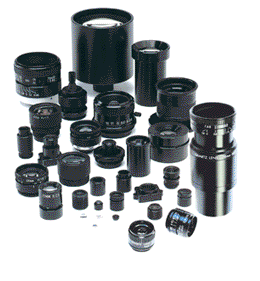High resolution lenses for machine vision — standard and custom lens design
The Power & Versatility Of LED Lighting
High Resolution Lenses for machine vision, instrumentation, inspection and vibration-sensitive applications. Standard and custom hi-res lens assemblies.

LED Lighting
Light Emitting diode (LED) technology is something that consumers are hearing about every day, everywhere from magazines, news reports and television commercials. LED technology literally surrounds us on a daily basis in some areas in which we might not even be aware of. Even though we are surrounded by LED technology on a daily basis, many consumers don’t understand its advantage over other light sources. LED benefits can be broken down into two simple categories:
The two types of lens mounts are:
- Power and versatility in use
- Longevity and energy efficiency
Watt-for-watt, LED bulbs produce more light, per watt, than other bulbs, even incandescent. Consider too, that a single LED bulb produces twice as many lumens (light power) as traditional light bulbs. LEDs light up quickly, don’t use mercury and aren’t hot to the touch like other bulbs. These bulbs, because they are smaller than other bulbs, are perfect for small areas that are in need of lighting.
Another benefit of LED light is that it is designed as a way to focus the light for a brighter, more intense light. These bulbs can also be configured to emit color without the use of colored filters.
Because LED bulbs don’t generate much heat, their energy consumption is used to create the light itself, other bulbs such as halogen and incandescent use up to 90% of the energy and light they create in the production of heat-carrying infrared light photons, these photons don’t create any visible light but do produce heat and increase your energy bill. The time you spend purchasing and changing light bulbs will also be cut down through the use of LED technology; LEDs can burn for up to 50,000 hours as compared to incandescent that burn for up to 2,000 hours. In areas where the lights are turned on and off on a regular basis LEDs can withstand the usage where fluorescent bulbs burn out more quickly if used in the same manner. LED bulbs are also more difficult to break as they don’t contain internal filaments like other bulbs do; LED bulbs have solid state component construction.
From home use, business buildings and hunting and camping enthusiasts have embraced the LED technology from lighting buildings to lighting the night on a camping trip. LEDs are also used in headlights for vehicles and in many uses in hospital and industrial settings.